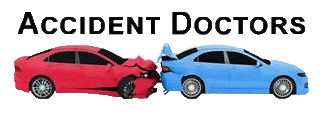A Complete Guide to Managing Chronic Pain From Car Accident Injuries
If you’ve been in a car accident, managing chronic pain can be overwhelming.
Many people suffer from back pain, neck pain, or other injuries long after the initial incident.
This guide will introduce you to effective strategies for managing chronic pain from car accident injuries.
Knowing essential first aid for car crash injuries, such as immobilizing the neck and spine, applying pressure to bleeding wounds, and maintaining proper body alignment, can greatly improve the outcome of the treatment for car accident injuries.
It’s important to work with healthcare professionals to develop a comprehensive treatment plan tailored to your specific needs.
This may include a combination of medical treatments, physical therapy, and relaxation techniques to help manage pain and improve function.
Understanding whiplash symptoms and their potential long-term impact is crucial for making informed decisions about your care and recovery.
By educating yourself about your condition and working closely with a qualified team of providers, you can improve your quality of life and effectively manage your chronic pain.
Keep reading to find helpful treatments and self-care techniques that can improve your quality of life.
Please note: We have pioneered a novel injection technique to resolve pain.
It uses platelets from your blood to provoke an immune response to stimulate self-healing.
Surprisingly, this technique works without any additional drug or chemical added.
Don’t get addicted to pain meds trying to get rid of chronic pain!
Watch a quick video about Platelet Rich Fibrin Treatments here.
Key Takeaways
Treatment Approaches
Professional Interventions
- Physical therapy techniques.
- Interventional procedures.
- Cognitive behavioral therapy.
- Platelet-rich fibrin treatments.
- Medical monitoring.
Physical Therapy Methods
Key Techniques
- Targeted exercise programs.
- Manual therapy.
- Heat and cold therapy.
- Electrical stimulation.
- Ultrasound treatments.
- Hydrotherapy.
- Posture training.
Pain Management Procedures
Medical Interventions
- Epidural steroid injections.
- Facet joint injections.
- Trigger point therapy.
- Nerve blocks.
- Spinal cord stimulation.
- Radio frequency ablation.
Self-Care Strategies
Personal Management Tools
- Deep breathing exercises.
- Progressive muscle relaxation.
- Guided imagery.
- Regular physical activity.
- Stress management techniques.
- Proper posture maintenance.
Warning Signs
When to Seek Help
- Pain worsening over time.
- Medication ineffectiveness.
- New symptoms development.
- Limited daily activities.
- Persistent depression or anxiety.
Comprehensive Treatment Approaches for Car Accident Injuries
Car accident injuries often require a multi-faceted approach for effective pain management.
It is important to monitor for delayed onset muscle soreness, which can occur in the days following the accident and may require additional treatment or modifications to the pain management plan.
Physical Therapy Techniques for Chronic Pain

Managing chronic pain from car accident injuries can be challenging. Physical therapy offers several effective techniques to help you find relief.
- Exercise Programs
- Specific exercises target affected muscles.
- Strength training helps reduce pain.
- Stretching improves flexibility and range of motion.
- Manual Therapy
- Physical therapists use hands-on techniques.
- Massage therapy reduces muscle tension.
- Joint mobilization eases stiff joints.
- Heat and Cold Therapy
- Heat therapy increases blood flow.
- Cold packs reduce inflammation and numb sore areas.
- Electrical Stimulation
- TENS units block pain signals to the brain.
- Stimulates muscles to improve function.
- Ultrasound Therapy
- Sound waves penetrate deep tissues.
- Promotes healing by increasing circulation.
- Acupuncture
- Involves inserting thin needles into specific points.
- Balances the body’s energy to relieve pain.
- Hydrotherapy
- Uses water exercises to ease joint stress.
- Warm water soothes and relaxes muscles.
- Posture Training
- Educates on proper posture techniques.
- Reduces strain on injured areas, especially in the lower back.
- Ergonomic Advice
- Suggestions for workplace adjustments.
- Prevents further injury during daily activities.
- Pain Education Programs
– Teaches about chronic pain mechanisms
– Helps develop coping strategies for better management
Physical therapy offers these tools to alleviate your pain effectively, ensuring a comprehensive approach to your recovery journey after a car accident injury
Interventional Procedures to Alleviate Pain

Interventional procedures can alleviate chronic pain from car accident injuries, particularly when addressing severe whiplash symptoms. These techniques target specific pain sources and often provide relief when other treatments do not work.
- Epidural Steroid Injections: Doctors inject steroids into the epidural space around your spinal cord, which helps reduce inflammation and nerve pressure. This method is effective for lower back pain and herniated discs.
- Facet Joint Injections: Steroids or anesthetics are injected into the facet joints of your spine to relieve pain caused by arthritis or whiplash. These injections reduce inflammation and provide quick relief.
- Trigger Point Injections: This involves injecting anesthetic or saline into painful muscle areas, known as trigger points. It helps ease muscle tightness, related to strains and whiplash.
- Nerve Blocks: Anesthetic is injected near specific nerves to block pain signals from reaching the brain. Nerve blocks are useful for acute backaches or shoulder injuries.
- Spinal Cord Stimulation: A small device is implanted under your skin, sending electric pulses to block pain signals before they reach your brain. This method helps with chronic lower back pain and nerve damage.
- Radiofrequency Ablation (RFA): RFA uses heat generated by radio waves to destroy nerve fibers that carry pain signals to your brain. It offers long-term relief from conditions like facet joint pain or sacroiliac joint dysfunction.
- Discograms: Dye is injected into discs in your spine, then X-rays identify damaged areas causing pain such as herniated discs or disc herniation.
Cognitive Behavioral Therapy for Pain Control

After interventional procedures to alleviate pain, consider cognitive-behavioral therapy (CBT) as a complementary approach. CBT helps you reframe negative thoughts about pain and reduces anxiety.
It equips you with skills to manage your mental health alongside physical symptoms.
‘Pain is inevitable, suffering is optional.’
Techniques in CBT include journaling and relaxation methods such as meditation.
These strategies can decrease your overall perception of pain and stress levels.
Engaging in these practices daily can lead to long-term benefits for those suffering from chronic injuries due to car accidents.
Self-Care Techniques for Chronic Pain Relief

You can reduce chronic pain by practicing regular relaxation techniques. Engaging in consistent exercise also helps manage long-term discomfort effectively.
Relaxation Techniques to Reduce Pain

Car accident injuries can cause chronic pain and other symptoms. Relaxation techniques help reduce this pain and improve your quality of life.
- Deep Breathing: Focus on slow, deep breaths. This calms the nervous system and reduces pain.
- Progressive Muscle Relaxation: Tense each muscle group for a few seconds, then relax. This technique helps to ease tension and pain in the body.
- Guided Imagery: Visualize a peaceful place. Imagine the sights, sounds, and feelings of being there. This practice distracts from pain.
- Meditation: Sit quietly and focus on your breath or a mantra. Consistent meditation reduces stress and can decrease pain levels over time.
- Tai Chi: Perform gentle movements combined with deep breathing. Tai Chi improves flexibility and reduces stress, helping to manage pain.
- Yoga: Practice specific poses that target painful areas. Yoga increases strength and flexibility while promoting relaxation.
Explore these techniques to find what works best for you. The next step is learning about exercise and movement for pain management.
Exercise and Movement for Pain Management

Relaxation techniques help manage chronic pain, but movement also plays a crucial role. Exercise can reduce pain and improve your quality of life.
- Stretching: Gentle stretches can ease muscle strain and increase flexibility. Try to stretch major muscle groups daily.
- Walking: A simple walk can boost circulation and reduce stiffness. Aim for at least 30 minutes a day if possible.
- Swimming: Water supports your body, making it easier to move without causing further pain from injuries like fractures or sprains.
- Yoga: This practice combines stretching and relaxation techniques that can ease back pain and nerve compression.
- Strength Training: Building muscle strength supports joints affected by car accident injuries, such as tears of the rotator cuff or soft tissue damage.
- Aerobic Exercises: Activities like cycling or light jogging increase endorphin levels, which are natural pain relievers.
- Tai Chi: This low-impact exercise improves balance and reduces stress, helping with chronic pain management related to musculoskeletal injuries.
- Physical Therapy Exercises: Specific movements prescribed by health professionals target individual issues like nerve pain or headaches and migraines.
- Pilates: Focuses on core strength which can support spinal adjustments performed by chiropractors after auto accidents.
- Home Exercise Programs: Simple exercises customized by a professional can be done at home to maintain progress between therapy sessions.
When to Consult a Pain Management Specialist

Frequent back pain or neuropathic pain may suggest the need for a specialist. If injuries cause numbness in your arms, see an expert immediately. Recurring head traumas might also require specialized care.
Try self-care first, but consult a professional if pain medicine does not provide relief. Consider visiting a pain clinic if you experience depression due to chronic pain.
Personal injury can benefit from advanced treatment options like muscle relaxants or cognitive behavioral therapy (CBT).
Conclusion
Managing chronic pain from car accident injuries requires a mix of strategies within a comprehensive recovery plan. Use physical therapy, interventional procedures, and cognitive behavioral therapy to address different aspects of pain.
Self-care techniques like relaxation and exercise complement professional treatments. Consult a specialist if your pain persists or worsens. Stay proactive and take charge of your health journey.
FAQs
1. What are effective strategies for managing chronic pain from car accident injuries?
Effective strategies include chiropractic care, stress management, alternative therapies, and natural healing methods.
2. How can chiropractic treatment help with back injuries?
Chiropractic treatment can alleviate pain in the back, including cases of delayed lower back pain, by adjusting spinal alignment and reducing pressure on pinched nerves.
3. Are there non-surgical options for managing muscle pain after a car accident?
Yes, options like muscle relaxers, psychotherapy, and support groups can help manage different types of pains without surgery.
4. Can stress management techniques aid in chronic pain relief?
Stress management techniques such as mindfulness and relaxation exercises can reduce overall discomfort and improve quality of life.
5. Is it beneficial to join a support group for dealing with concussion-related pains?
Joining a support group provides emotional backing and shared experiences that can be crucial in handling the long-term effects of concussions.

